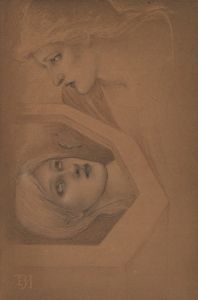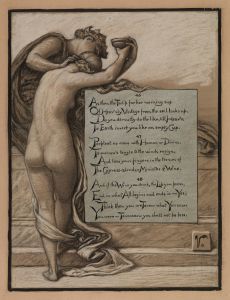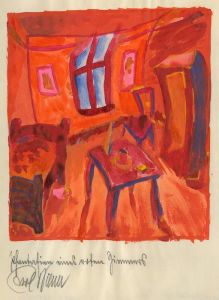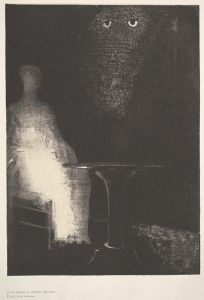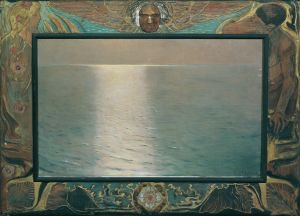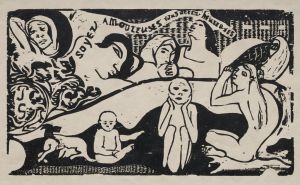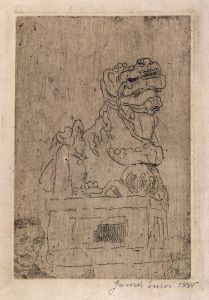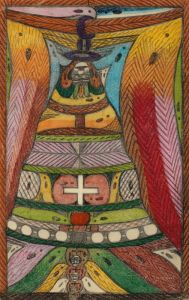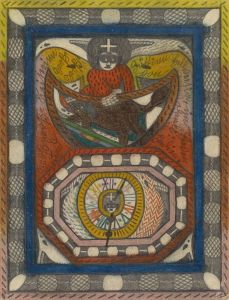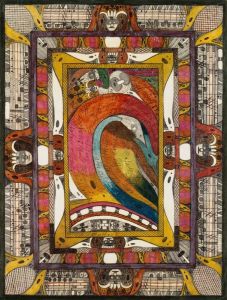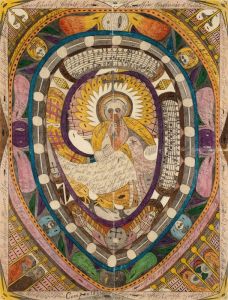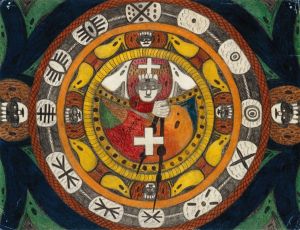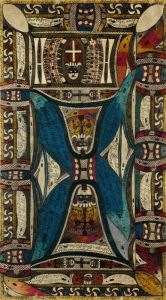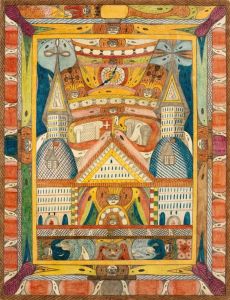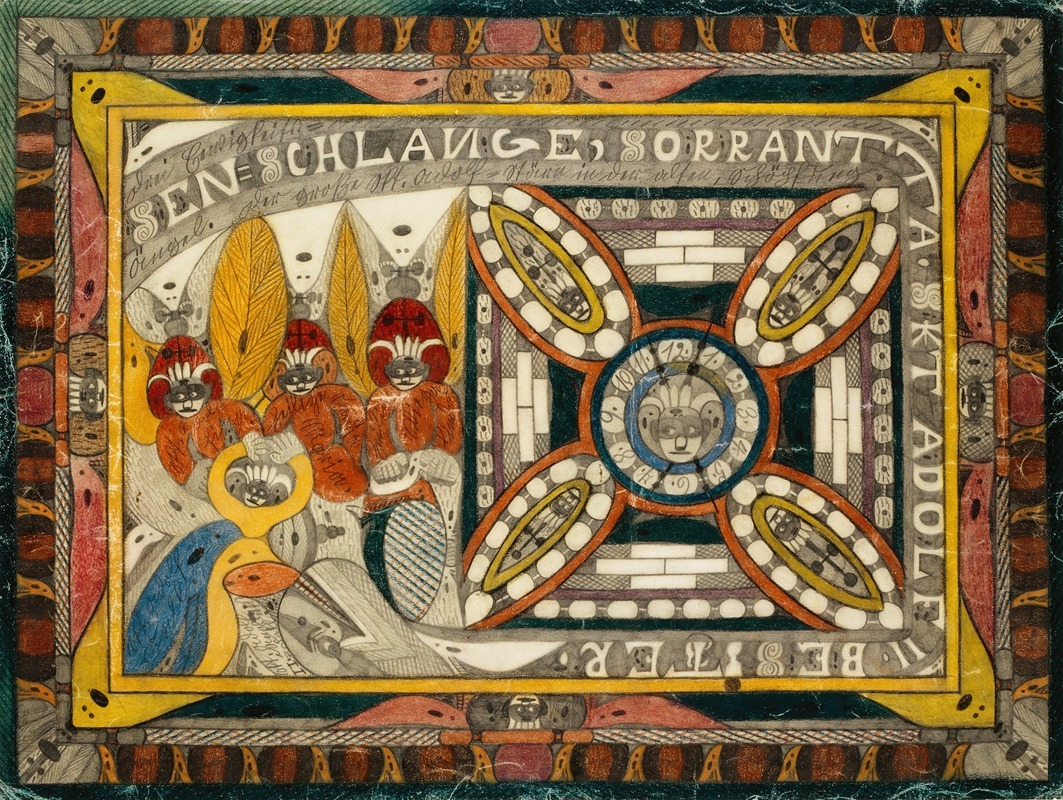
Riesen=Schlange, Sorrantta, drei Eewigkeits=Ängel und der große Skt. Adolf=Stärn in der alten, Schöpfung
A hand-painted replica of Adolf Wölfli’s masterpiece Riesen=Schlange, Sorrantta, drei Eewigkeits=Ängel und der große Skt. Adolf=Stärn in der alten, Schöpfung, meticulously crafted by professional artists to capture the true essence of the original. Each piece is created with museum-quality canvas and rare mineral pigments, carefully painted by experienced artists with delicate brushstrokes and rich, layered colors to perfectly recreate the texture of the original artwork. Unlike machine-printed reproductions, this hand-painted version brings the painting to life, infused with the artist’s emotions and skill in every stroke. Whether for personal collection or home decoration, it instantly elevates the artistic atmosphere of any space.
Adolf Wölfli (1864–1930) was a Swiss artist and writer, widely regarded as one of the most significant figures in the field of Art Brut, or "outsider art." His works are characterized by intricate patterns, vivid colors, and a unique combination of text, music, and visual art. Wölfli created his art while institutionalized at the Waldau Psychiatric Clinic in Bern, where he spent much of his adult life after being diagnosed with schizophrenia.
One of his notable works, Riesen=Schlange, Sorrantta, drei Eewigkeits=Ängel und der große Skt. Adolf=Stärn in der alten, Schöpfung (translated as Giant Snake, Sorrantta, Three Eternity Angels, and the Great Saint Adolf Star in the Old Creation), exemplifies Wölfli's distinctive style. This piece is part of his larger magnum opus, a series of works collectively known as the St. Adolf-Giant-Creation, which he produced over decades. The series combines fantastical imagery, autobiographical elements, and invented cosmologies, reflecting Wölfli's inner world and imagination.
The artwork features a dense composition filled with symbolic and fantastical elements. Wölfli often incorporated text into his visual works, blending narrative, poetry, and musical notation. His pieces frequently include references to his alter ego, "Saint Adolf," a heroic figure central to his imagined universe. The title of this work suggests a narrative involving a giant snake, angels, and celestial imagery, themes that recur throughout Wölfli's oeuvre.
Wölfli's art was discovered and championed by Walter Morgenthaler, a psychiatrist at the Waldau Clinic, who published a monograph on Wölfli in 1921 titled Ein Geisteskranker als Künstler (A Psychiatric Patient as Artist). This publication brought Wölfli's work to the attention of the art world and established him as a pioneering figure in outsider art. Today, his works are preserved and displayed at the Adolf Wölfli Foundation at the Museum of Fine Arts in Bern, Switzerland.
Due to the highly personal and idiosyncratic nature of Wölfli's art, interpretations of his works often rely on the context of his life and the broader themes present in his body of work. However, specific details about the creation or intended meaning of Riesen=Schlange, Sorrantta, drei Eewigkeits=Ängel und der große Skt. Adolf=Stärn in der alten, Schöpfung are not extensively documented. As with much of Wölfli's art, the piece invites viewers to engage with its complexity and draw their own interpretations.





